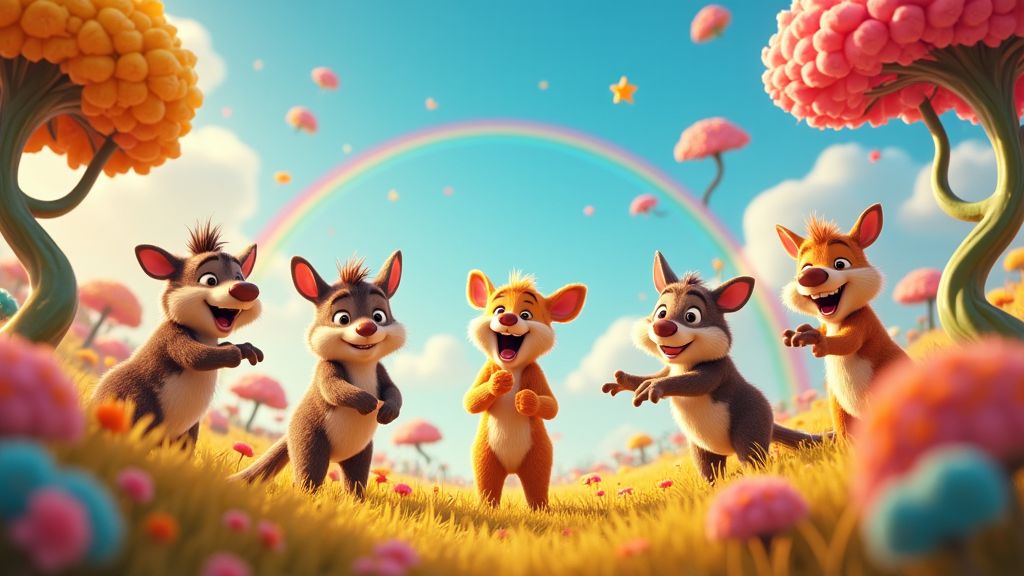The Role of Humor in Children’s Television Shows
Have you ever noticed how children’s television shows seem to have a magical way of captivating young audiences? One key element that plays a significant role in this is humor. Whether it’s a clever joke, a quirky character, or a funny situation, humor has the power to engage children and make learning fun. In this article, we will explore the importance of humor in children’s TV shows and how it enhances the viewing experience for young viewers.
Why Humor Matters
Humor is a universal language that transcends age barriers. For children, humor serves as a valuable tool for entertainment and education. When incorporated into television shows, humor can capture children’s attention, stimulate their imagination, and promote cognitive development. Research has shown that humor can improve memory retention, increase engagement, and foster social interaction among children. These benefits make humor an essential ingredient in creating successful children’s programs.
The Evolution of Humor in Children’s TV Shows
Over the years, the role of humor in children’s television shows has evolved significantly. Early shows relied on slapstick comedy and visual gags to entertain young viewers. As television programming became more sophisticated, writers and creators began incorporating clever wordplay, witty dialogue, and subtle humor into their shows. This shift allowed for more nuanced storytelling and character development, making children’s TV shows not only entertaining but also intellectually stimulating.
Impact of Humor on Child Development
Humor plays a crucial role in supporting child development. When children watch funny and engaging TV shows, they are more likely to stay engaged and attentive, which can enhance their cognitive skills. Additionally, humor can promote emotional well-being by reducing stress and anxiety in children. By providing a light-hearted and enjoyable viewing experience, children’s TV shows create a positive environment for learning and growth.
Case Studies: The Power of Humor in Action
To illustrate the impact of humor in children’s television shows, let’s take a look at a few case studies. Shows like ‘SpongeBob SquarePants’ and ‘Paw Patrol’ have gained massive popularity among young audiences due to their humor-rich content. These shows combine funny characters, witty dialogue, and silly situations to keep children entertained and engaged. Through humor, these shows have managed to not only entertain but also educate young viewers on important life lessons.
Parental Perspectives on Humor in Kids’ Shows
Parents often look for children’s shows that strike the right balance between entertainment and educational value. Humor that engages both children and adults can make family viewing experiences more enjoyable. Shows with layers of humor that cater to different age groups allow parents and kids to laugh together, fostering family bonding. Parents appreciate programs that incorporate positive humor, which teaches kindness, empathy, and resilience, making humor an impactful tool for reinforcing family values.
The Role of Animation in Amplifying Humor
Animation provides creators with limitless possibilities to enhance humor. Exaggerated expressions, vibrant colors, and whimsical scenarios allow children to experience humor in a visually engaging way. Animated shows can amplify comedic effects by breaking the rules of physics or reality, making characters’ actions and reactions hilariously impossible. This visual freedom keeps young audiences captivated and allows for imaginative storytelling, where humor becomes the key to holding their attention.
Interactive Humor in Digital Content
With the rise of digital platforms and interactive content, humor in children’s programming is evolving to include viewer participation. Interactive shows, where children can choose a character’s actions or react to prompts, make humor a shared experience that feels more personal. Apps and online platforms are integrating games and humorous animations that adapt to children’s responses, enhancing engagement and making learning feel like play. This interactivity transforms humor from a passive experience into an interactive and educational one.
The Future of Humor in Children’s Media
As children’s media continues to evolve, humor is likely to remain a fundamental element, adapted for new technologies and storytelling formats. With VR and AR technology on the horizon, humor in kids’ content could soon involve immersive experiences that make children feel like part of the joke. Shows may incorporate humor that encourages children to think critically and creatively. As these formats develop, humor will continue to be an effective tool for learning and enjoyment in children’s media.













